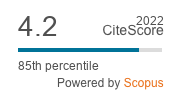Article | Open Access
“Mass,” “Movement,” “Personal,” or “Cartel” Party? Fidesz’s Hybrid Organisational Strategy
| Views: | 2949 | | | Downloads: | 2293 |
Abstract: In the last decade, Fidesz has dominated the Hungarian political landscape, becoming the most extensive Hungarian party organisation in terms of party members, structuration, resources, and influence. The party’s organisational development has been determined by a constant strategic adaptation to new circumstances of political reality and new demands of the electorate. The article argues that in three phases of its development, Fidesz adopted different party organisation guidelines. As a result, a hybrid party architecture was formed involving various characteristics and strategies of mass parties (e.g., relatively large membership and ideological communication), movement parties (i.e., top-down generation of mass rallies and protest activities), personal parties (i.e., personalisation, centralisation of party leadership), and cartel parties (i.e., use of state resources, control over party competition). Instead of switching from one strategy to another, the party often used these strategies simultaneously. This flexible party organisation can balance among the different needs of effective governance, constant mobilisation, and popular sovereignty. The article aims to dissect these building blocks of Fidesz to gain insight into the emergence of the hybrid party model.
Keywords: cartel parties; Fidesz; hybrid party strategies; mass parties; movement parties; personal parties
Published:
© Rudolf Metz, Réka Várnagy. This is an open access article distributed under the terms of the Creative Commons Attribution 4.0 license (http://creativecommons.org/licenses/by/4.0), which permits any use, distribution, and reproduction of the work without further permission provided the original author(s) and source are credited.




